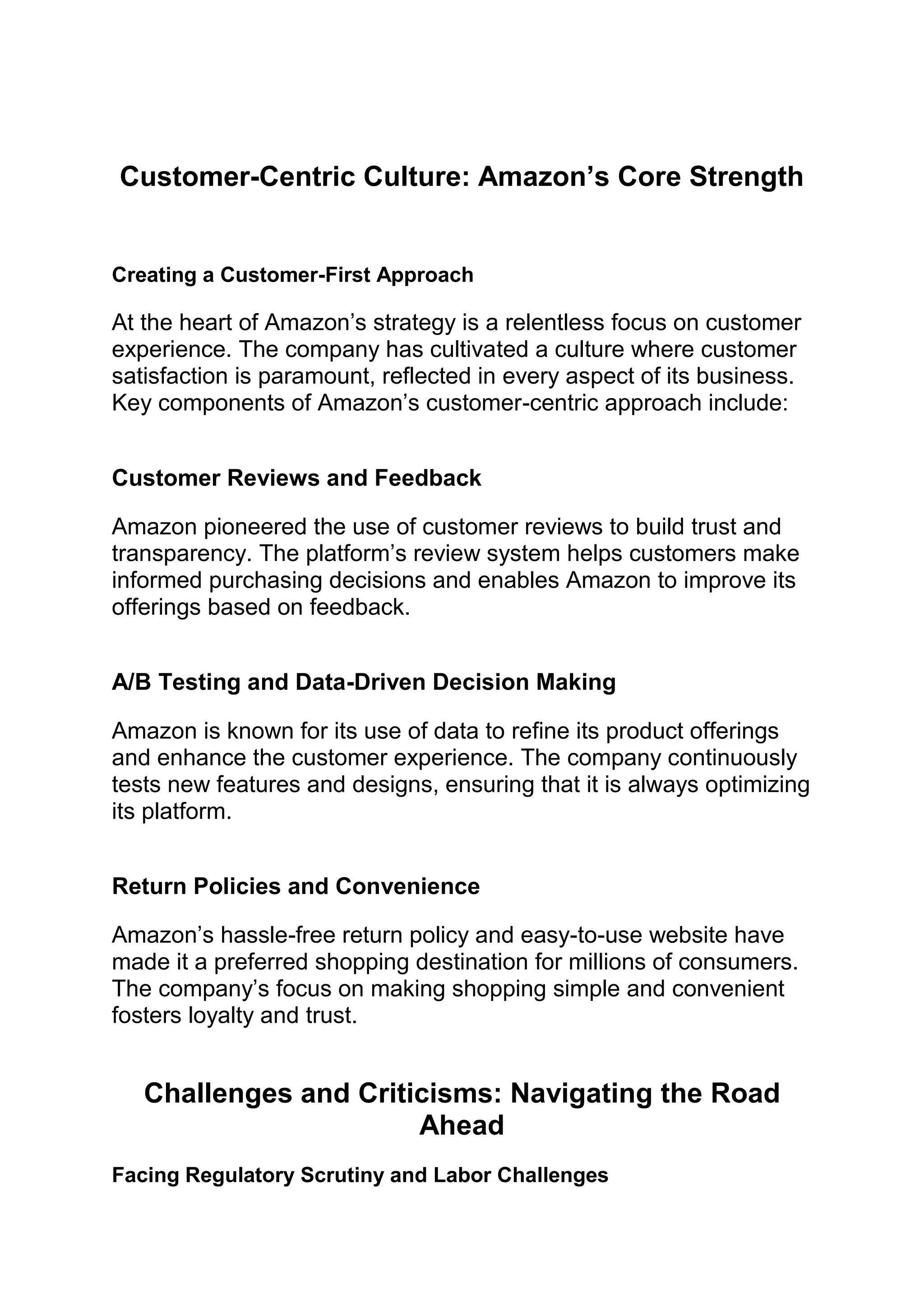Amazon, founded in 1994 by Jeff Bezos, started as an online bookstore but quickly evolved into a global powerhouse that transformed the way people shop, work, and live. Today, Amazon is one of the world’s most valuable and influential companies, known for its e-commerce platform, cloud computing services, consumer electronics, and entertainment ventures. This case study will examine Amazon's growth strategy, innovative practices, and how it disrupted traditional industries to become a leader in technology and retail.







